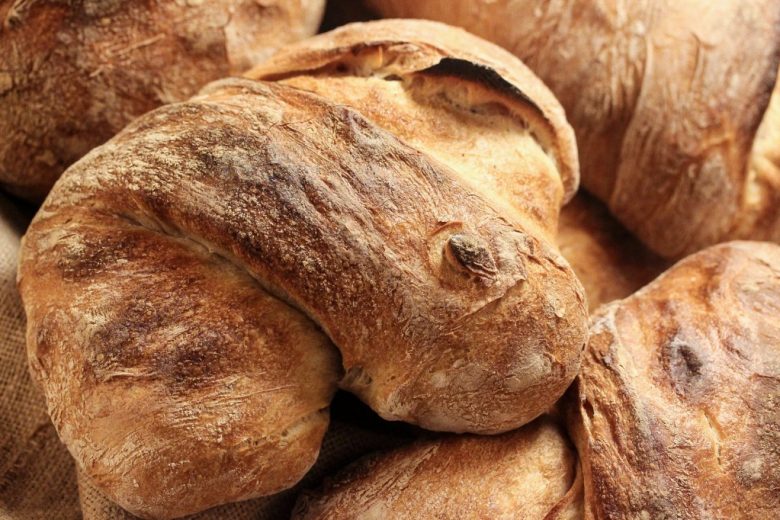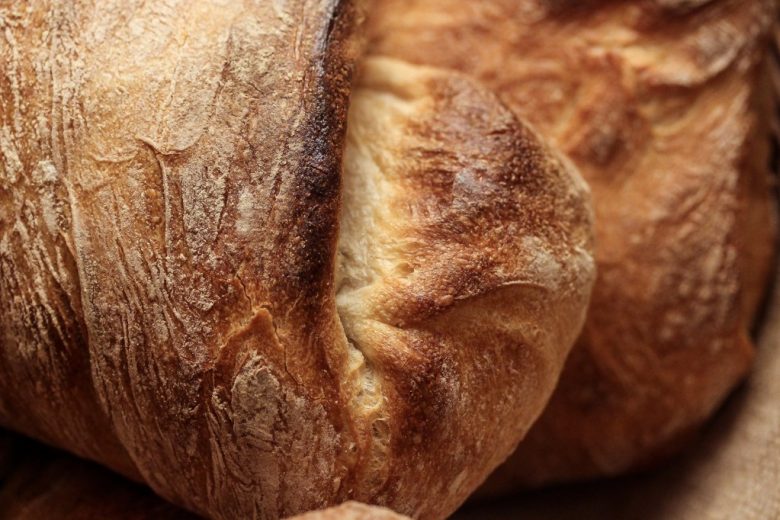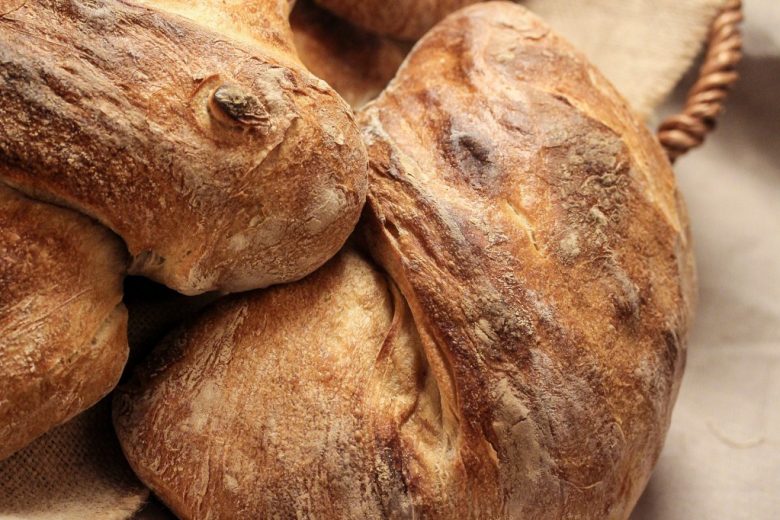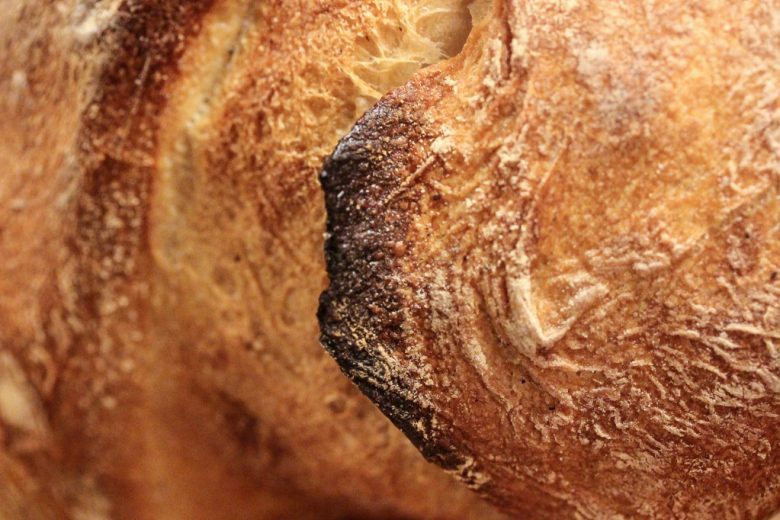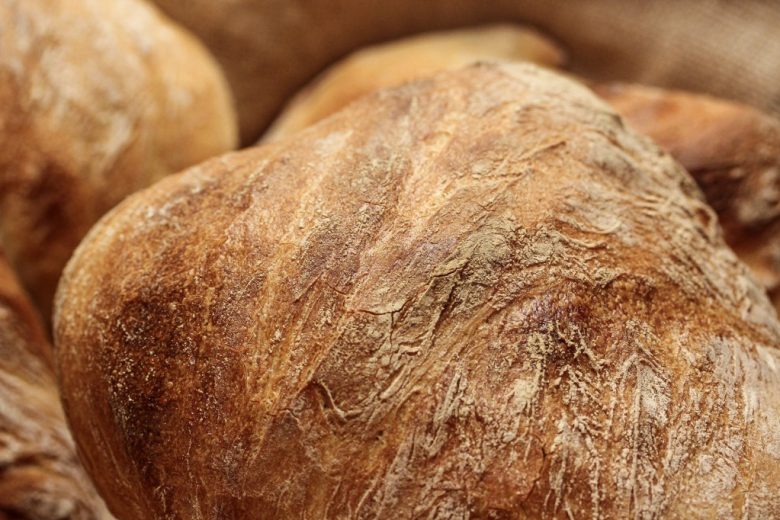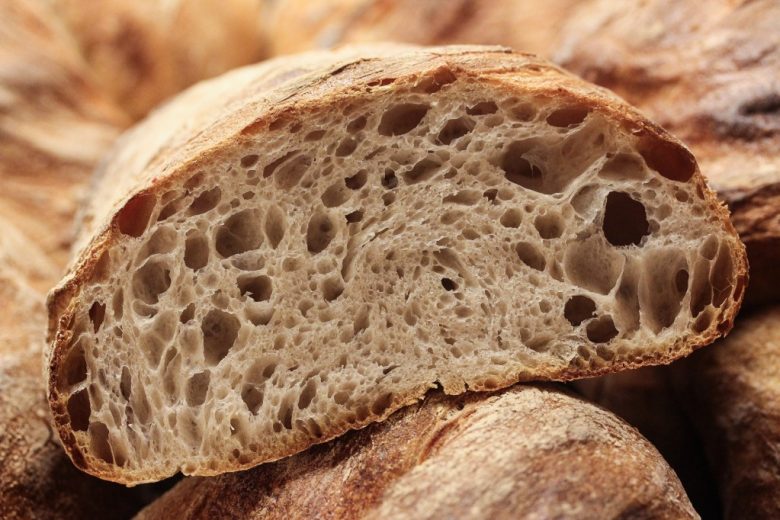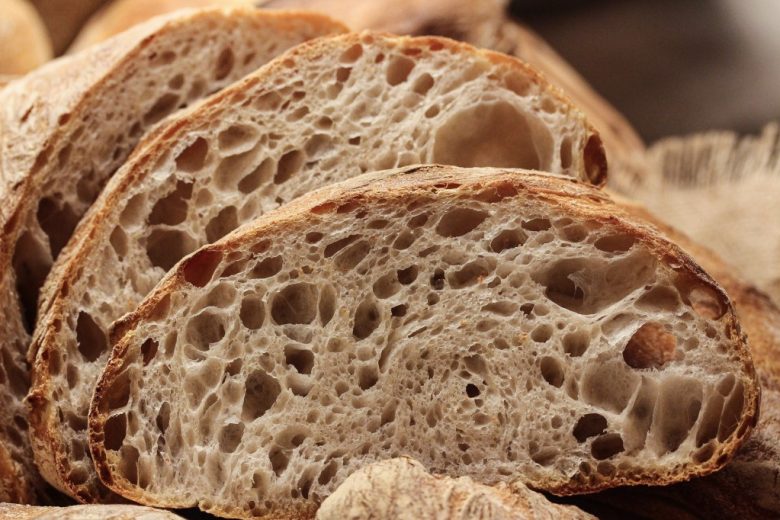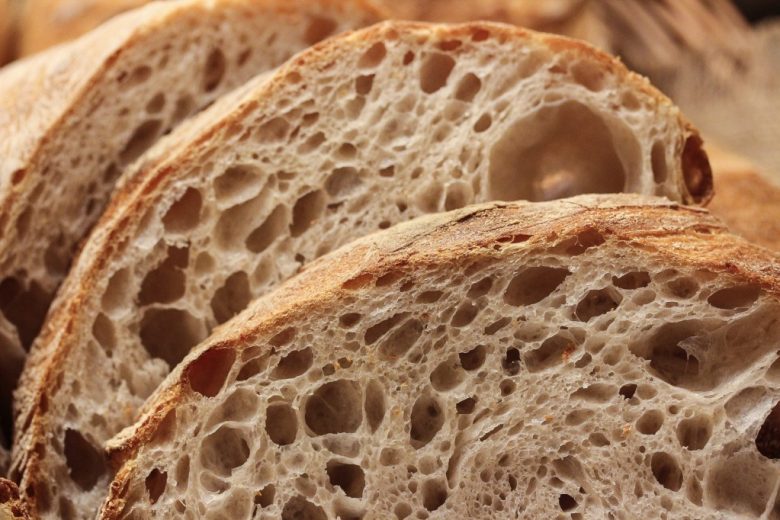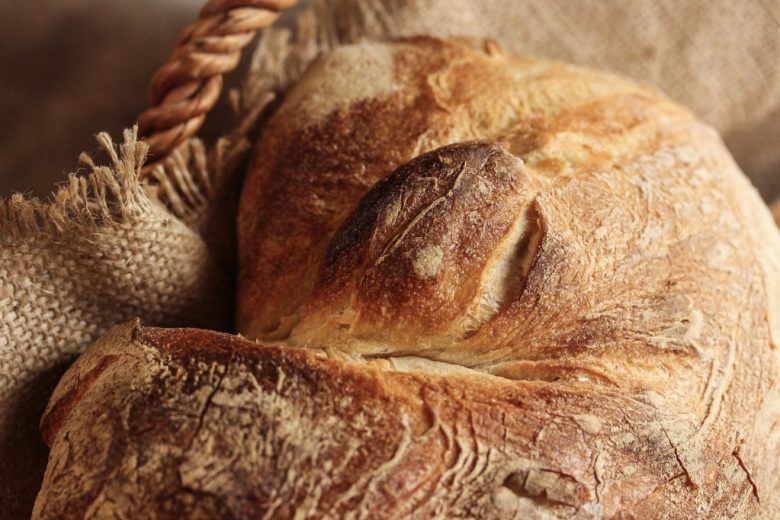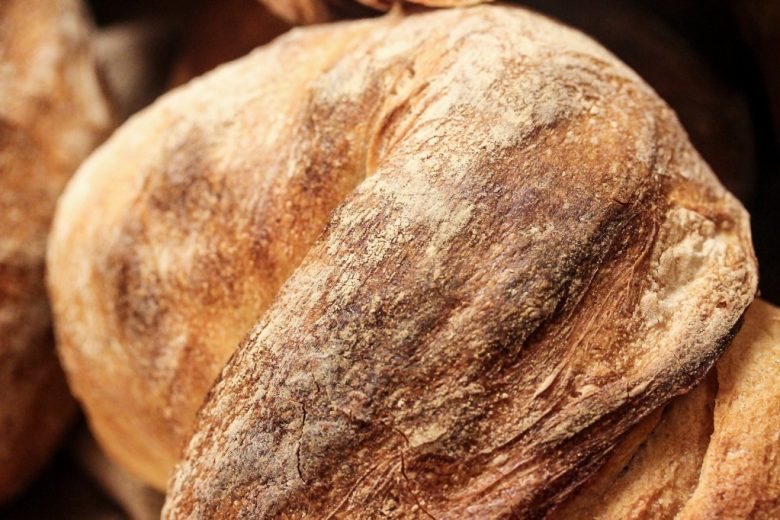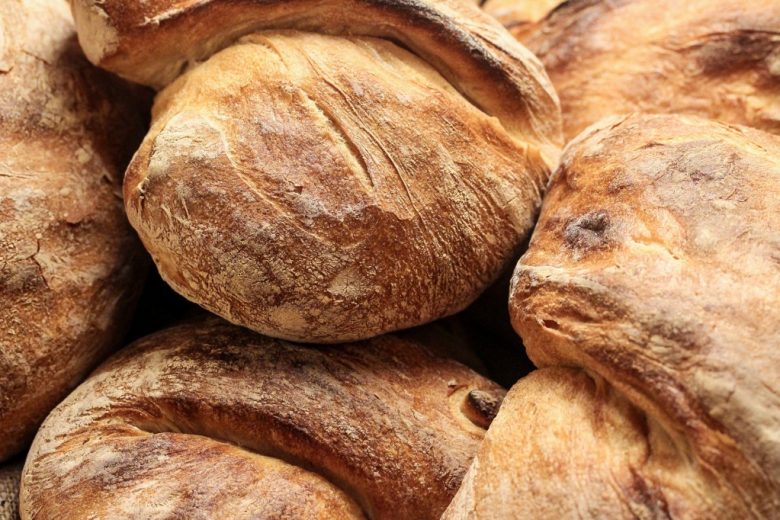Tuscan Bread
Dough that has been kneaded cannot yet be considered finished. A bulk proof is necessary for further absorption and relaxation. For this, the dough should be either in a bowl or a dough tub. It’s important that the dough be covered during this stage, either with a cloth or plastic wrap, as this prevents the surface from drying out.
In the past, the bulk rise was described as the dough rest, but this term doesn’t reflect what is actually taking place. Though the dough is not being worked in the post-knead phase, the flour components are soaking up moisture and the gluten is relaxing, a crucial step.
Wheat doughs should be stretched and folded once or multiple times during bulk rises of more than one hour. Aerating the dough forces out carbon dioxide that has formed, incorporates air and provides the yeast with new food. It also increases the pores in the crumb and turns large air holes into smaller, more even ones.
Additionally, folding and stretching improves dough strength. It is important not to overextend the optimal bulk rise time, otherwise the dough will become very weak. The death of yeast cells also contributes to this, as they release enzymes that weaken the gluten.
Length of bulk rise before shaping for specific types of wheat breads
The duration of the bulk rise can vary a lot among wheat breads. It is influenced by dough hydration and temperature, as well as mixing and kneading times. The times provided in the following table should only be taken as “guidelines.”
Wheat bread, baked without a form
40-60 minutes
Wheat bread, baked in a form
30-40 minutes
Mixed wheat breads
20-40 minutes
Baguette
40-60 minutes
Ciabatta
180-240 minutes
Effect of yeast activity on dough strength
During the bulk rise, tiny gas bubbles form throughout the dough. These are known as pores. The dough expands due to the gas pressure in the pores. The increase in the dough’s exterior surface volume is accompanied by a large increase in its “interior surface.” The gas pressure causes gluten membranes to tear, which in turn causes multiple pores to combine into one large one. The pressure in this spot consequently decreases, while the smaller surrounding pores remain.
The root cause of an irregular crumb is therefore the gluten’s differentiated elasticity. As gas pressure increases, the walls of some pores tear, while others stretch. Such differentiated elasticity in gluten strands can be found in doughs that have not been fully kneaded.
Temperature differences within dough
Temperature differences within one piece of dough can also cause yeast activity to vary. The cooling of the dough surface and the release of energy (heat) due to micro-organic activity results in a temperature difference, which leads to increased gas formation in the core of the dough.
Folding the dough during long bulk rises is crucial to avoiding different temperatures and achieving an attractive crumb. If a coarse crumb is desired (ciabatta, baguette), then the dough should only be stretched very carefully. This maintains the dough’s pore structure while releasing carbon dioxide and replenishing nutrients.
Recipe
For a dough weigh of 1237g / 2 pieces 618g
Rye sourdough:
- 45g rye flour type 960
- 45g water 40°C
- 8g starter
DT: 30°C TA: 200 RT: 12-15 hours
Wheat sourdough:
- 30g wheat flour type 1600
- 30g water 40°C
- 5g starter
DT: 27-30°C TA: 200 RT: 12-15 hours
Poolish:
- 170g Italian flour type 00
- 170g water 20°C
- 1g yeast
DT: 15°C TA: 200 RT: 2 hours at room temperature, then 10-12 hours in fridge at 4°C
Main dough:
- 341g mature poolish
- 98g mature rye sourdough
- 65g mature wheat sourdough
- 440g Italian flour type 00
- 250g water (the BRAVE will add 40g more)
- 14g salt
- 25g olive oil
- 4g yeast
DT: 24-26°C TA: 172 (the BRAVE 178!!) MT: 8 minutes slowly / c. 4-6 minutes quickly
Instructions:
- Mix predough flour and water for 2 minutes and then cover and let stand for 30 minutes (autolyse).
- Add the salt and the yeast and mix slowly for 10 minutes.
- Then mix quickly until the dough falls away from the side of the mixing bowl.
- After the dough falls away, mix in the olive oil (knead quickly until the olive oil has been fully incorporated into the dough).
- Place the dough into an oiled tub and stretch and fold after 35 and 70 minutes.
- After a total rise time of 105 minutes, divide the dough into two pieces of equal size.
- Preshape the dough into round loaves by folding and gently refining the shape – do NOT shape too tightly!
- Let the dough rest briefly seamside-down and then shape into elongated loaves. Place these seamside-down onto a floured linen cloth and let them proof for 15 minutes.
- Once 1/2 proofed, remove the loaves from the linen cloth, wrapping the dough lengthwise once around itself, and then shape into a round loaf.
- Let it finish proofing on a floured peel or on parchment paper.
- Once fully proofed, place in the oven at 240-250°C with steam.
- After 10 minutes, lower the temperature to 220°C.
- Do not exceed 35 minutes of baking time (for a better crust, release the steam toward the ending of the baking).


